Insurance is a complex field with numerous concepts and principles that can sometimes seem overwhelming. Here’s a comprehensive overview of the key concepts in insurance, organized into several main categories:
1. Basic Principles of Insurance
a. Risk Pooling:
- Insurance operates on the principle of pooling risks. Individuals or businesses pay premiums into a common fund, which is then used to cover the losses of those who experience a covered event.
b. Risk Transfer:
- By purchasing insurance, individuals or entities transfer the financial risk of certain events to the insurer. Instead of bearing the financial loss themselves, they pay a premium to the insurer.
c. Insurable Interest:
- For a policy to be valid, the insured must have a financial stake in the insured asset or person. This means the insured stands to suffer a financial loss if the insured event occurs.
d. Utmost Good Faith (Uberrimae Fidei):
- Both parties in an insurance contract must act honestly and disclose all relevant information. The insurer relies on the insured to provide accurate information, while the insured relies on the insurer to uphold the terms of the policy.
e. Indemnity:
- Insurance aims to restore the insured to the same financial position they were in before the loss occurred, without providing a profit. This concept prevents overcompensation.
f. Subrogation:
- After paying a claim, the insurer may pursue a third party responsible for the loss to recover the claim amount. This helps keep insurance costs down.
g. Contribution:
- If there are multiple insurance policies covering the same risk, each insurer contributes to the claim payment based on the terms of their policies.
2. Types of Insurance
a. Life Insurance:
- Provides financial support to beneficiaries upon the death of the insured. It includes term life, whole life, and universal life policies.
b. Health Insurance:
- Covers medical expenses incurred due to illness or injury. It includes various plans such as HMO, PPO, and high-deductible health plans.
c. Property Insurance:
- Covers damage to or loss of physical property due to events like fire, theft, or vandalism. This includes homeowners, renters, and commercial property insurance.
d. Liability Insurance:
- Protects against legal claims for damages or injuries caused to others. Types include general liability, professional liability, and auto liability insurance.
e. Auto Insurance:
- Covers losses related to the ownership and operation of vehicles. It includes liability, collision, and comprehensive coverage.
f. Disability Insurance:
- Provides income replacement if the insured is unable to work due to a disability. It includes short-term and long-term disability policies.
g. Travel Insurance:
- Covers risks associated with travel, including trip cancellations, lost luggage, and emergency medical expenses.
3. Policy Components
a. Premium:
- The amount paid periodically by the insured to the insurer for coverage. Premiums can be paid monthly, quarterly, annually, etc.
b. Deductible:
- The amount the insured must pay out-of-pocket before the insurer pays a claim. Higher deductibles usually mean lower premiums and vice versa.
c. Coverage Limits:
- The maximum amount the insurer will pay for a covered loss. It can be specified per occurrence, per year, or as a total aggregate limit.
d. Exclusions:
- Specific conditions or situations that are not covered by the policy. Common exclusions include wear and tear, intentional damage, or acts of war.
e. Beneficiaries:
- Individuals or entities designated to receive benefits from a life insurance policy or other insurance claims.
f. Endorsements/Riders:
- Amendments to the insurance policy that modify the standard coverage. They can provide additional benefits or exclude certain risks.
g. Terms and Conditions:
- The detailed provisions in the policy outlining what is covered, what is not, and the responsibilities of both parties.
4. Insurance Processes
a. Underwriting:
- The process of evaluating the risks of insuring a person or entity and determining the terms and pricing of the insurance policy.
b. Claims Process:
- The procedure followed to request compensation for a loss. It involves reporting the claim, providing documentation, and working with adjusters to settle the claim.
c. Adjusting:
- The process of assessing the validity and value of a claim. Adjusters investigate claims, determine coverage, and negotiate settlements.
d. Reinsurance:
- Insurance purchased by insurance companies from other insurers to manage risk and increase capacity. It helps insurance companies handle large losses.
5. Regulatory and Legal Aspects
a. Insurance Regulation:
- Insurance companies are regulated by government agencies to ensure financial stability, protect consumers, and enforce fair practices. Regulations vary by jurisdiction.
b. Solvency:
- Insurers must maintain sufficient financial reserves to meet future claims. Regulators assess insurers’ solvency to prevent bankruptcies that could affect policyholders.
c. Fair Practices:
- Regulations ensure insurers operate fairly, including rules about clear communication, timely claim processing, and transparency in advertising.
6. Advanced Concepts
a. Actuarial Science:
- The use of mathematical models and statistical methods to assess risk and determine premium rates, reserves, and policy terms.
b. Moral Hazard:
- The risk that the behavior of the insured may change as a result of having insurance, potentially leading to more frequent or severe losses.
c. Adverse Selection:
- The tendency for those at higher risk to be more likely to purchase insurance, which can lead to unbalanced risk pools and higher costs for insurers.
d. Loss Prevention and Control:
- Strategies and measures implemented to reduce the frequency or severity of losses, which can include safety programs, risk assessments, and safety inspections.
Summary Table
| Category | Concept | Description |
|---|---|---|
| Basic Principles | Risk Pooling | Combining risks to spread financial impact. |
| Risk Transfer | Shifting financial risk from the insured to the insurer. | |
| Insurable Interest | A financial stake in the insured asset or person. | |
| Utmost Good Faith | Full disclosure of all relevant information by both parties. | |
| Indemnity | Restoring the insured to the pre-loss financial state. | |
| Subrogation | Insurer’s right to pursue third parties for claim recovery. | |
| Contribution | Sharing claims among multiple insurers. | |
| Types of Insurance | Life Insurance | Coverage for death benefits. |
| Health Insurance | Coverage for medical expenses. | |
| Property Insurance | Coverage for damage to physical property. | |
| Liability Insurance | Protection against legal claims. | |
| Auto Insurance | Coverage for vehicle-related losses. | |
| Disability Insurance | Income replacement for work incapacity. | |
| Travel Insurance | Coverage for travel-related risks. | |
| Policy Components | Premium | Periodic payment for insurance coverage. |
| Deductible | Out-of-pocket expense before coverage kicks in. | |
| Coverage Limits | Maximum payout for a claim. | |
| Exclusions | Conditions not covered by the policy. | |
| Beneficiaries | Individuals or entities receiving policy benefits. | |
| Endorsements/Riders | Additions or modifications to standard policy terms. | |
| Terms and Conditions | Detailed policy provisions and responsibilities. | |
| Insurance Processes | Underwriting | Risk evaluation and policy pricing. |
| Claims Process | Procedures for requesting and settling claims. | |
| Adjusting | Assessing and settling insurance claims. | |
| Reinsurance | Insurance for insurance companies to manage risk. | |
| Regulatory Aspects | Insurance Regulation | Government oversight of insurance companies. |
| Solvency | Ensuring insurers have enough reserves for claims. | |
| Fair Practices | Rules for transparent and fair insurance practices. | |
| Advanced Concepts | Actuarial Science | Mathematical risk assessment and pricing. |
| Moral Hazard | Risk of behavior change due to insurance coverage. | |
| Adverse Selection | Higher-risk individuals seeking insurance more often. | |
| Loss Prevention and Control | Measures to reduce or mitigate losses. |
These concepts form the foundation of insurance and understanding them can help you navigate the field more effectively. If you have more specific questions or need details about any of these concepts, feel free to ask!



